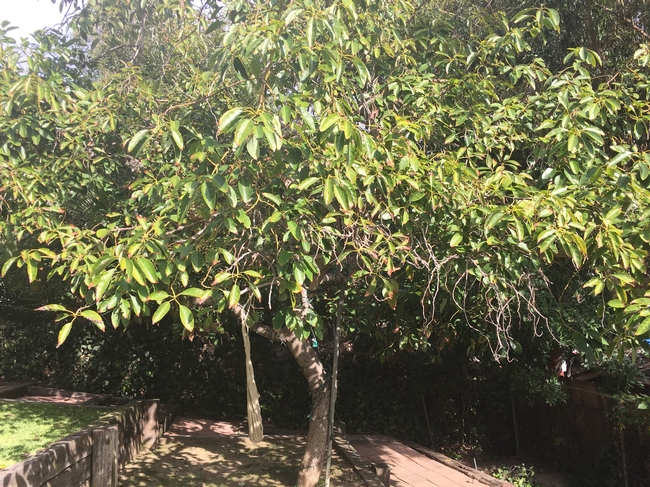Of the many known varieties, they fall into three broad categories based on whether they are of the Mexican, Guatemalan or West Indian races of Persea americana, the avocado specie and the crosses that occur between these races. For example, ‘Hass' has the thick skin of the Guatemalan but turns black like a Mexican. Generally speaking, California varieties have been the result of crossing between the Mexican and Guatemalan races. West Indian race varieties are not common here because of their generally lower cold tolerance. There are lots of factors approaching the identification of an avocado and its origins, and here is a brief run down on those that need to be considered.
Grafted?
Is it a grafted tree, or is it a known variety with known characteristics which the tree can be compared to? Look for the change in bark texture at the base of the tree where the graft was made.
Leaf characteristics
When you crush the leaf, does it have an anise smell (Mexican) or not?
Is the leaf edger smooth (Hass) or wavy (Zutano)?
Is the color of the new leaves red and turn green (Mexican) or are green (Guatemalan)?
Canopy shape
Is it columnar (Bacon, Reed) or umbrella (Hass)?
Is the mature tree big (Hass) or under 20 feet in height (Holiday, Littlecado, Gwen)?
Fruit
Is the fruit round (Nabal), pear shaped (Fuerte), thin necked (Pinkerton) or broad shouldered (Lamb-Hass)
Is it thick skinned (Guatemalan) or thin skinned (Mexican)?
Is it green when ripe (Guatemalan) or black (Mexican)?
Is it big (more than 16 ounces; Daily 11 is 5 pounds) or small (Mexicola is 5 ounces)?
When is fruit maturity; winter, spring, summer or fall?
The combination of all these factors go into describing a variety and distinguishes it from other varieties. When varieties have mixed parentage, they will take on those characteristics of each parent, so often the lines of either Mexican or Guatemalan get blurred.
Attached Images:
